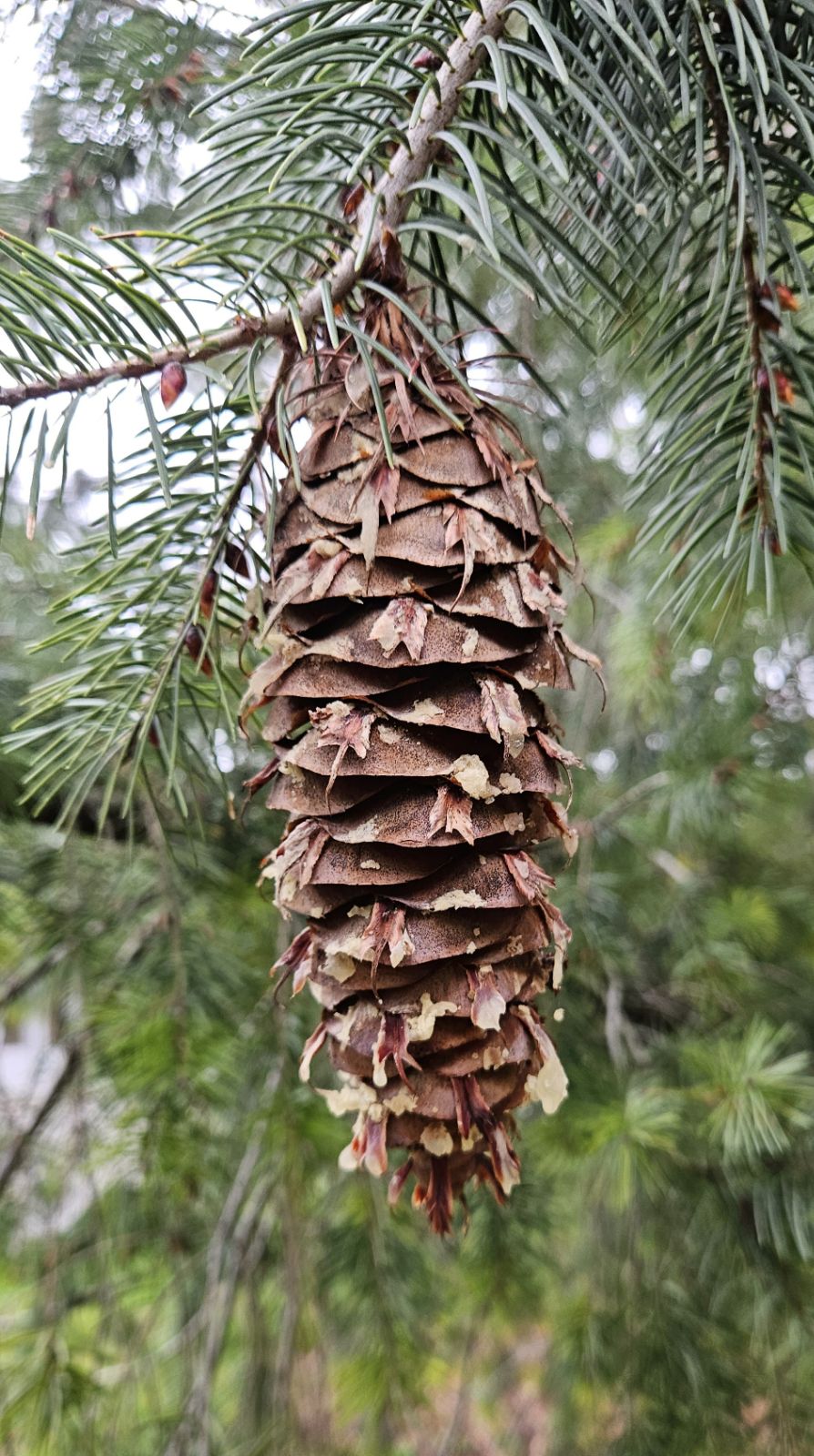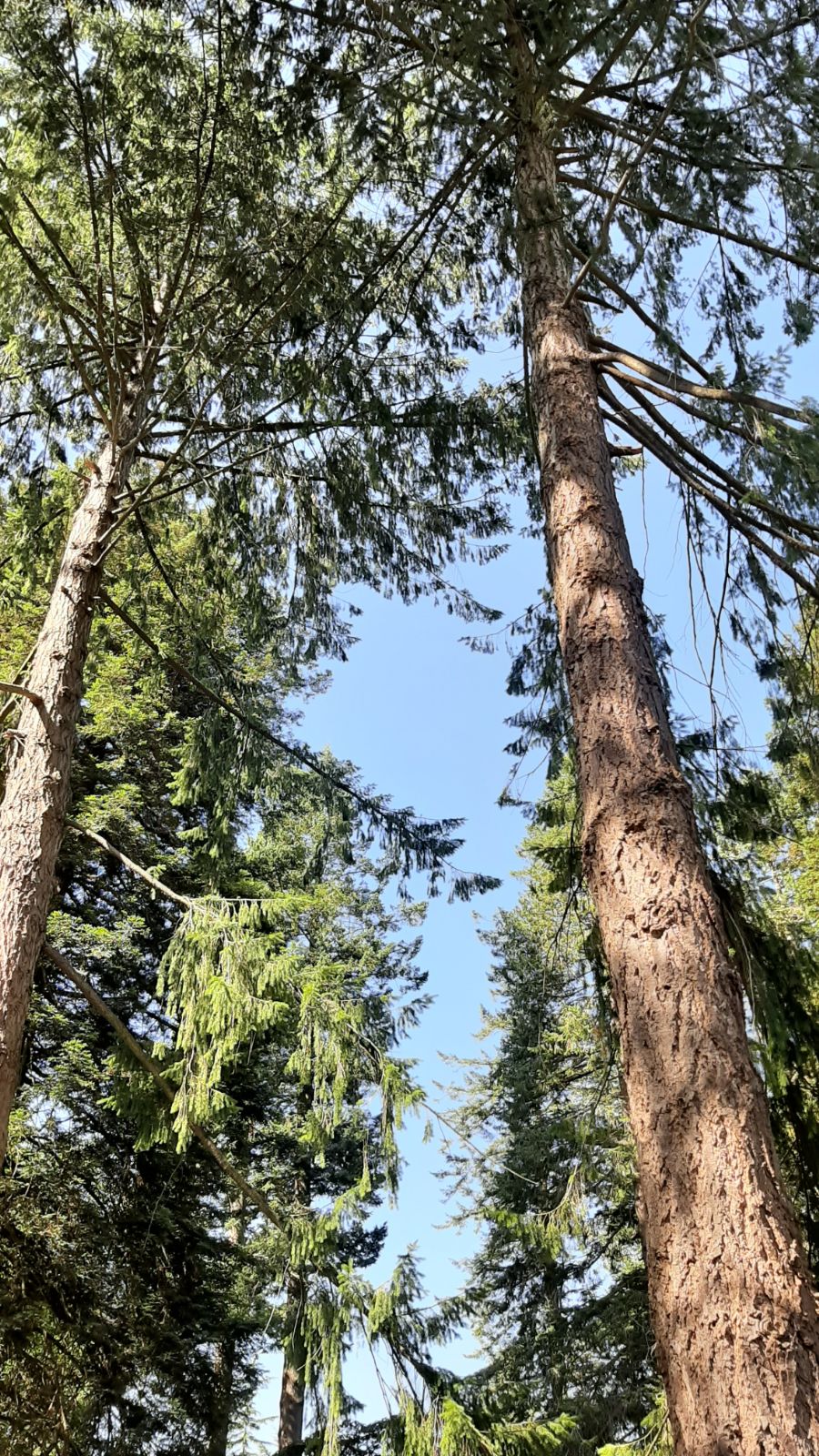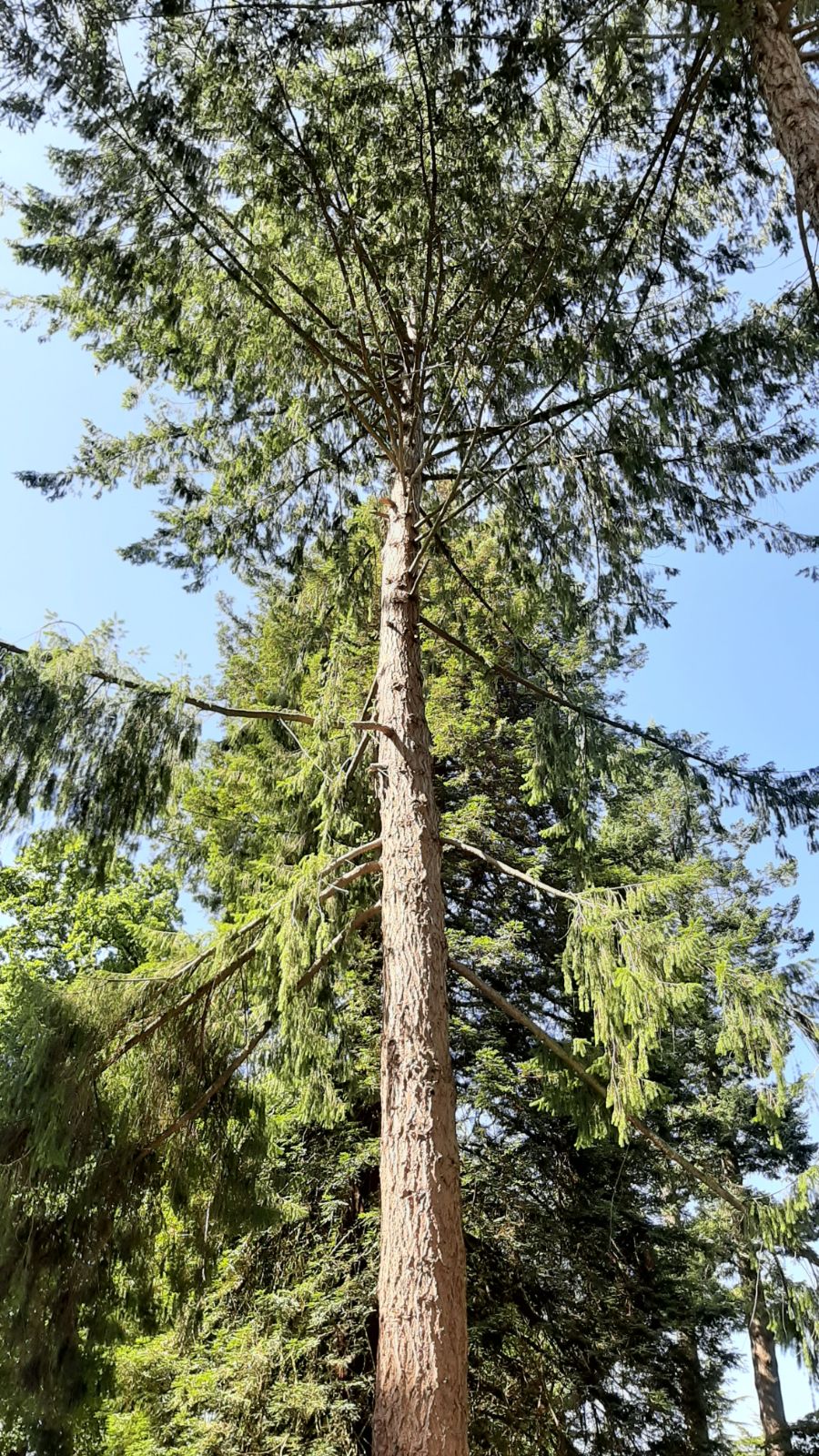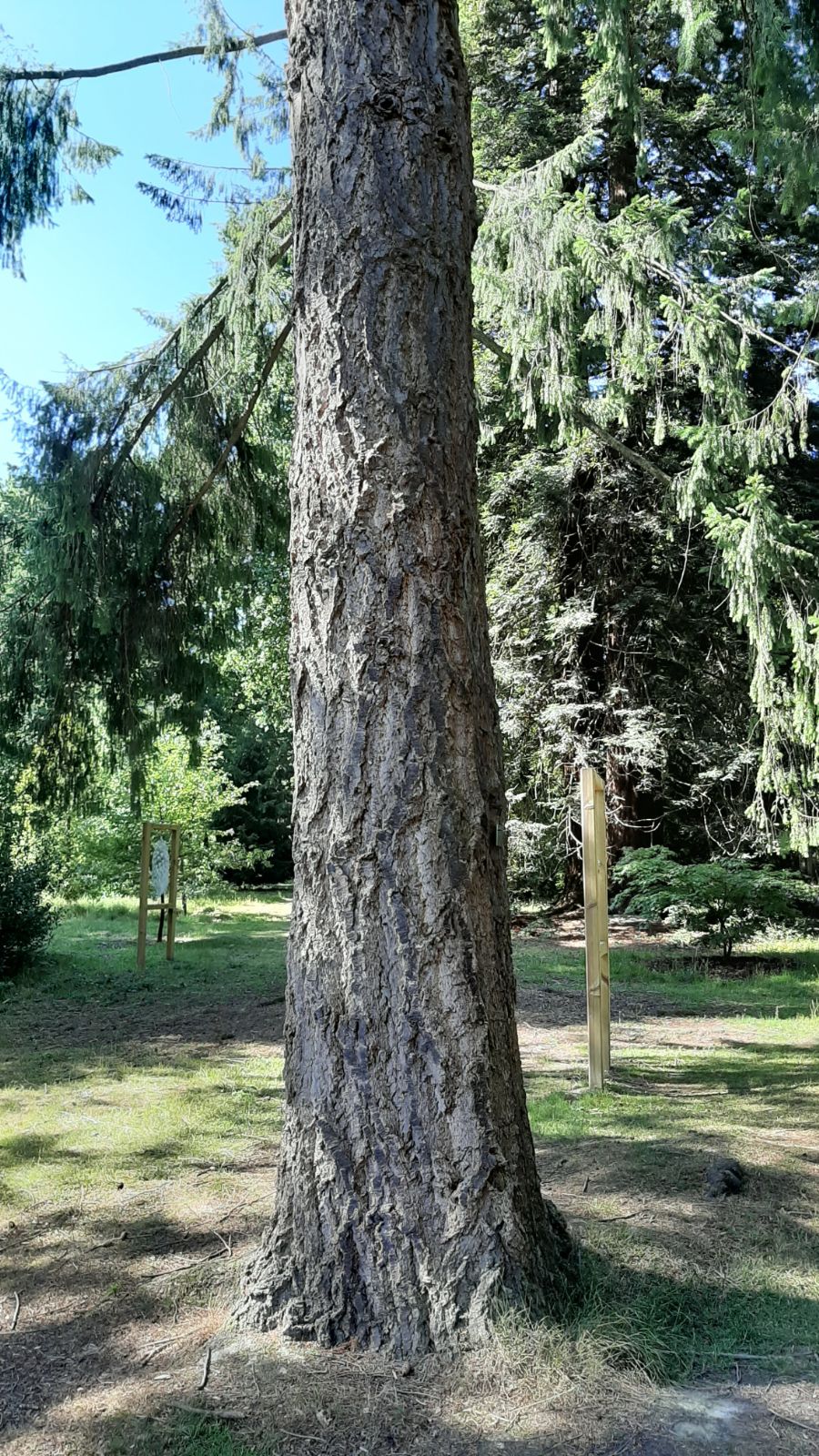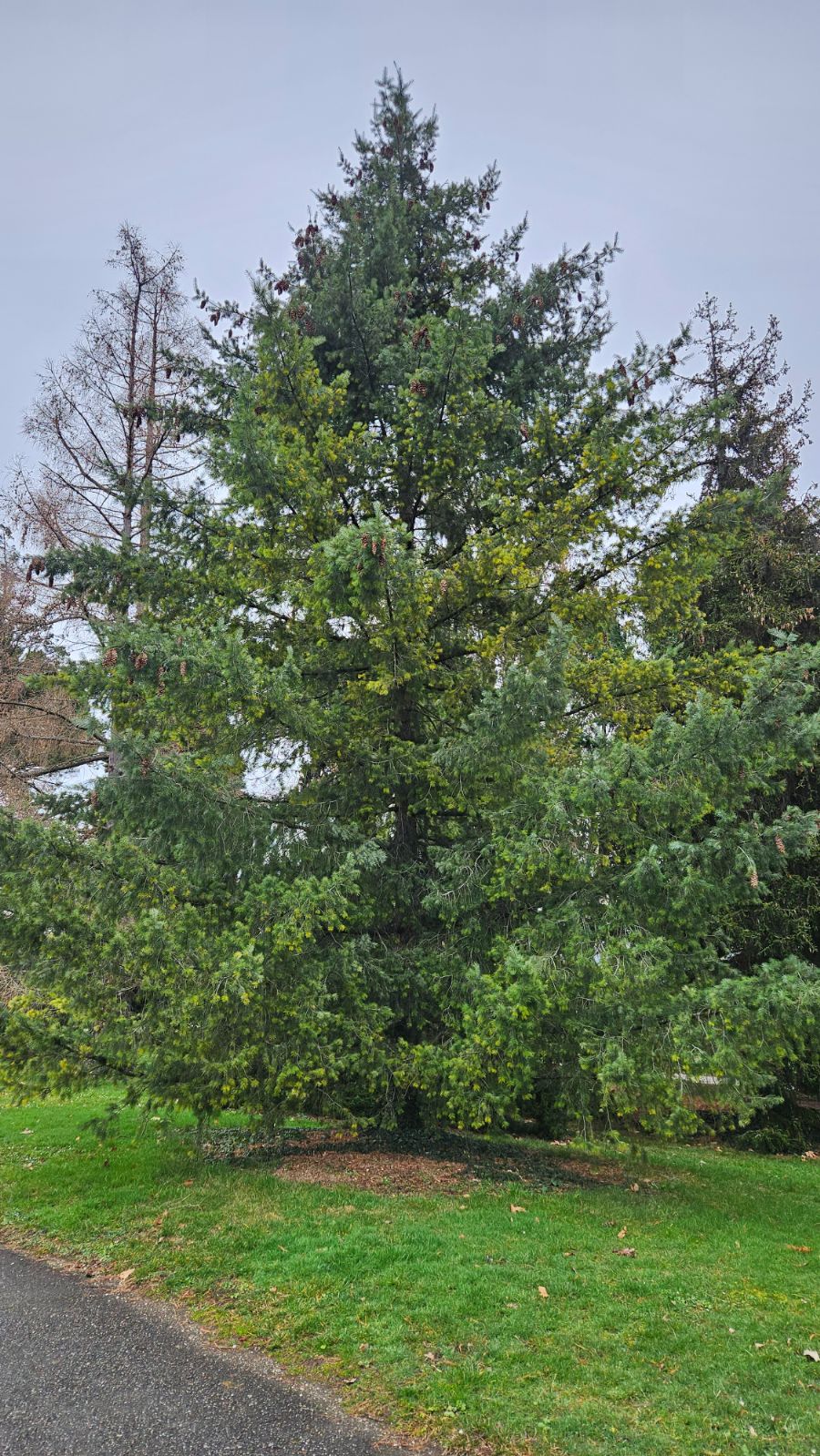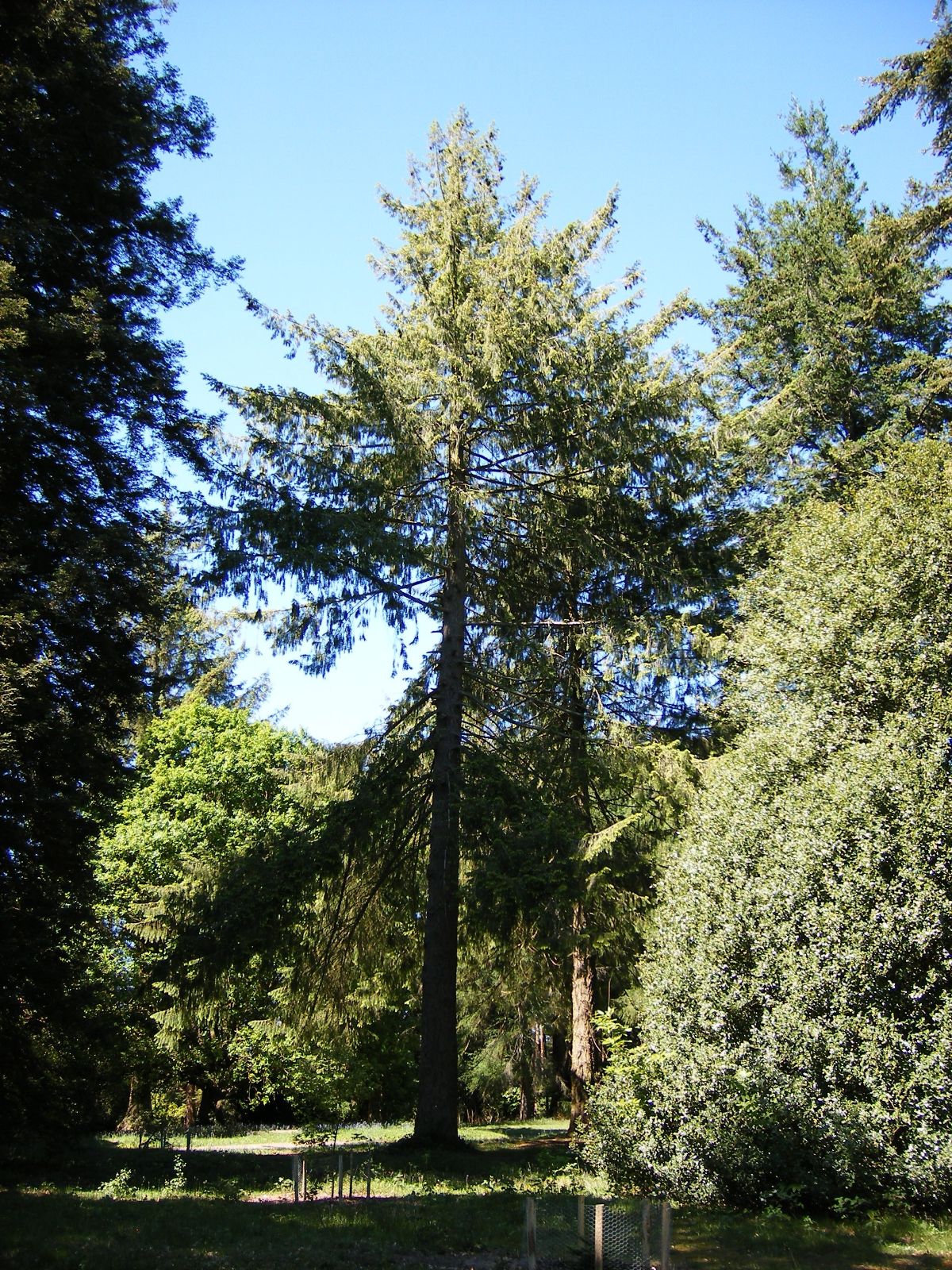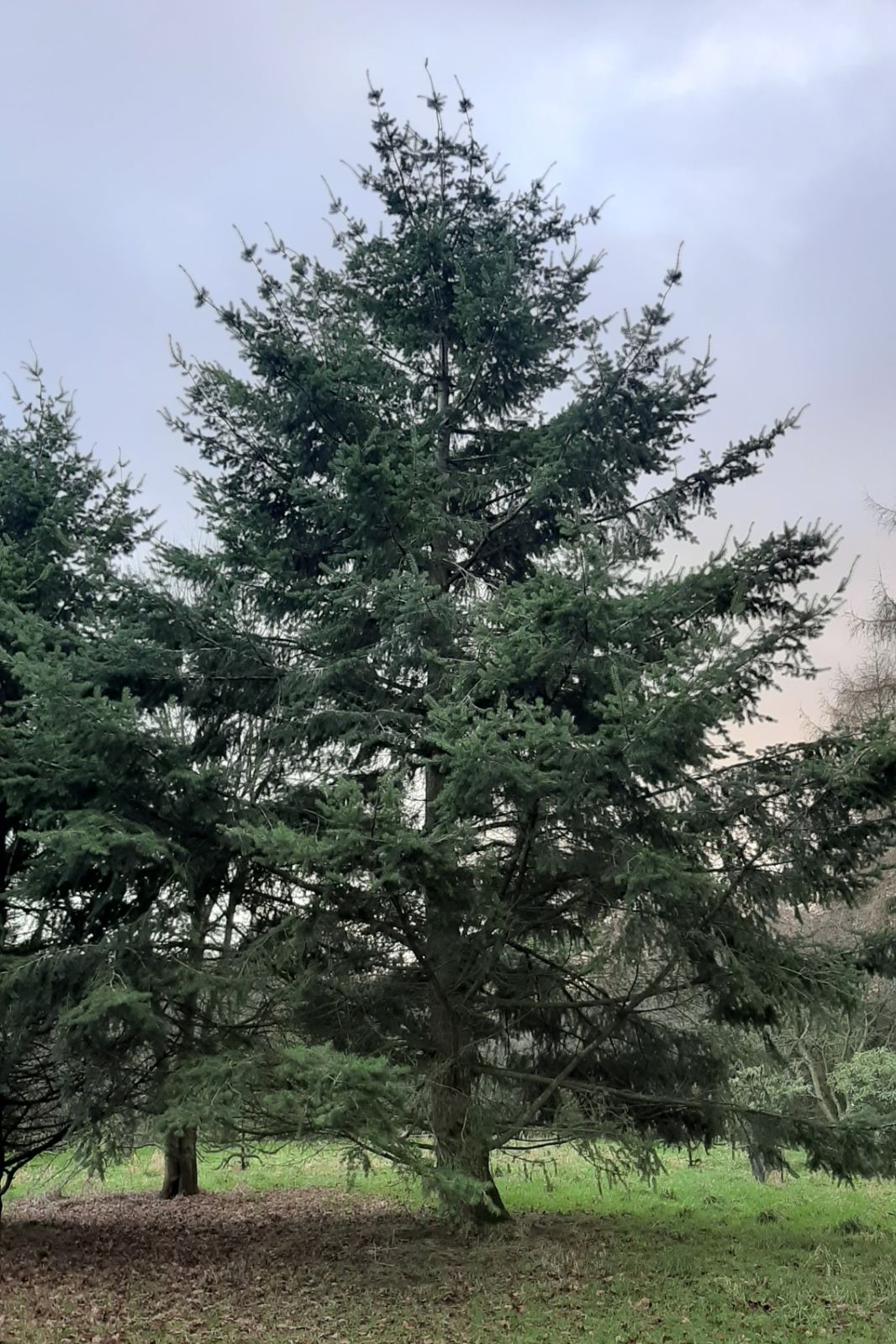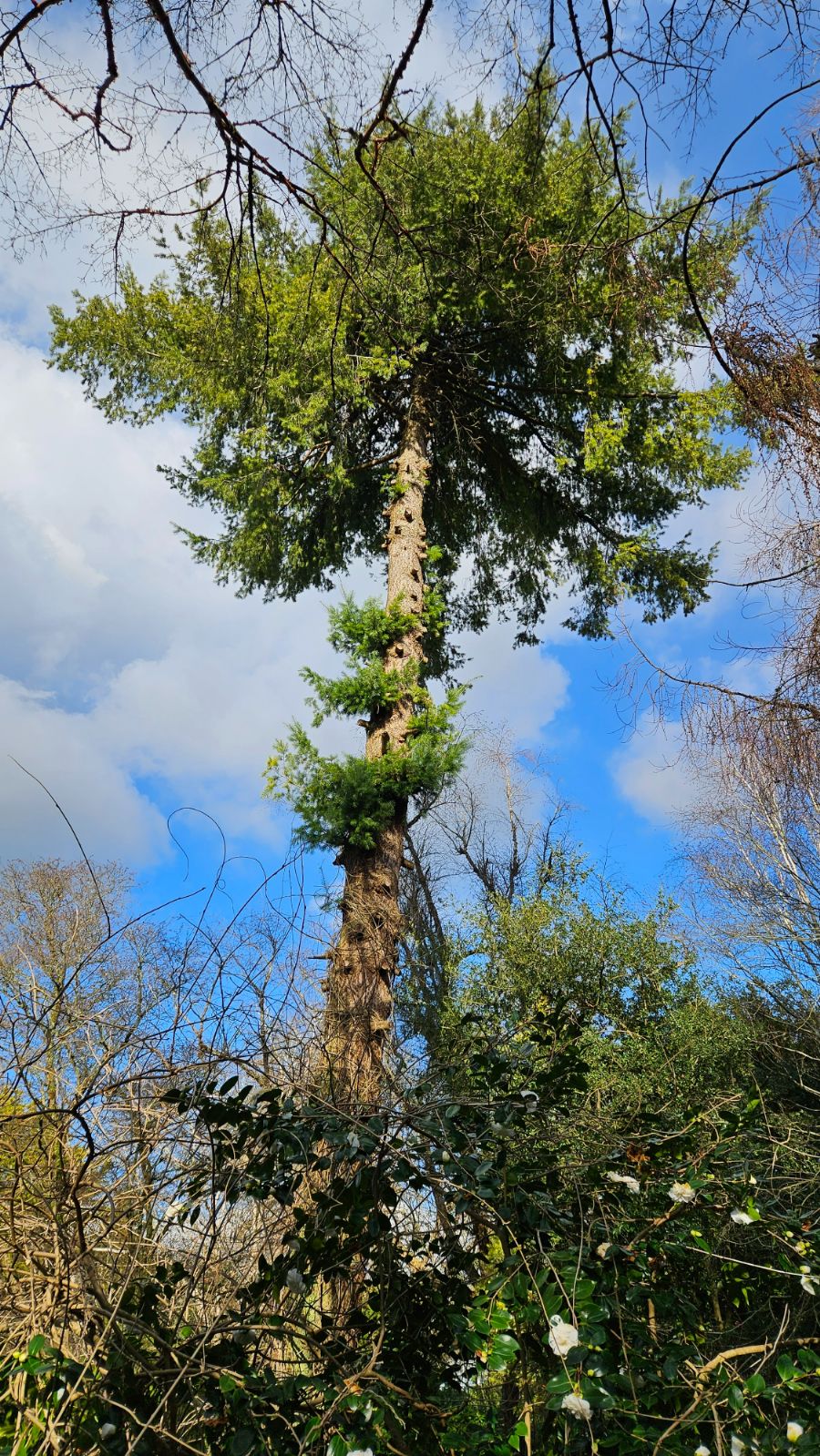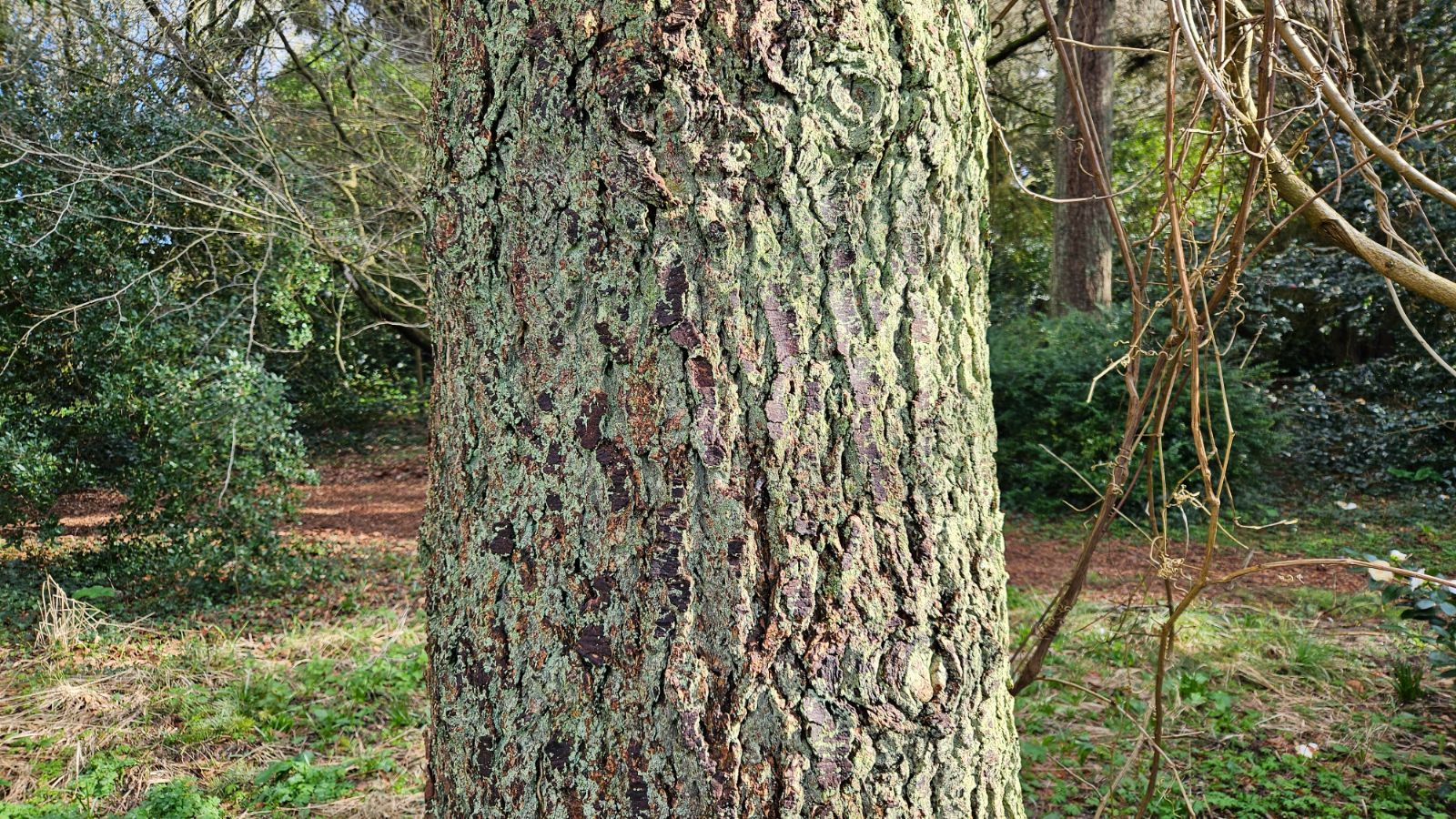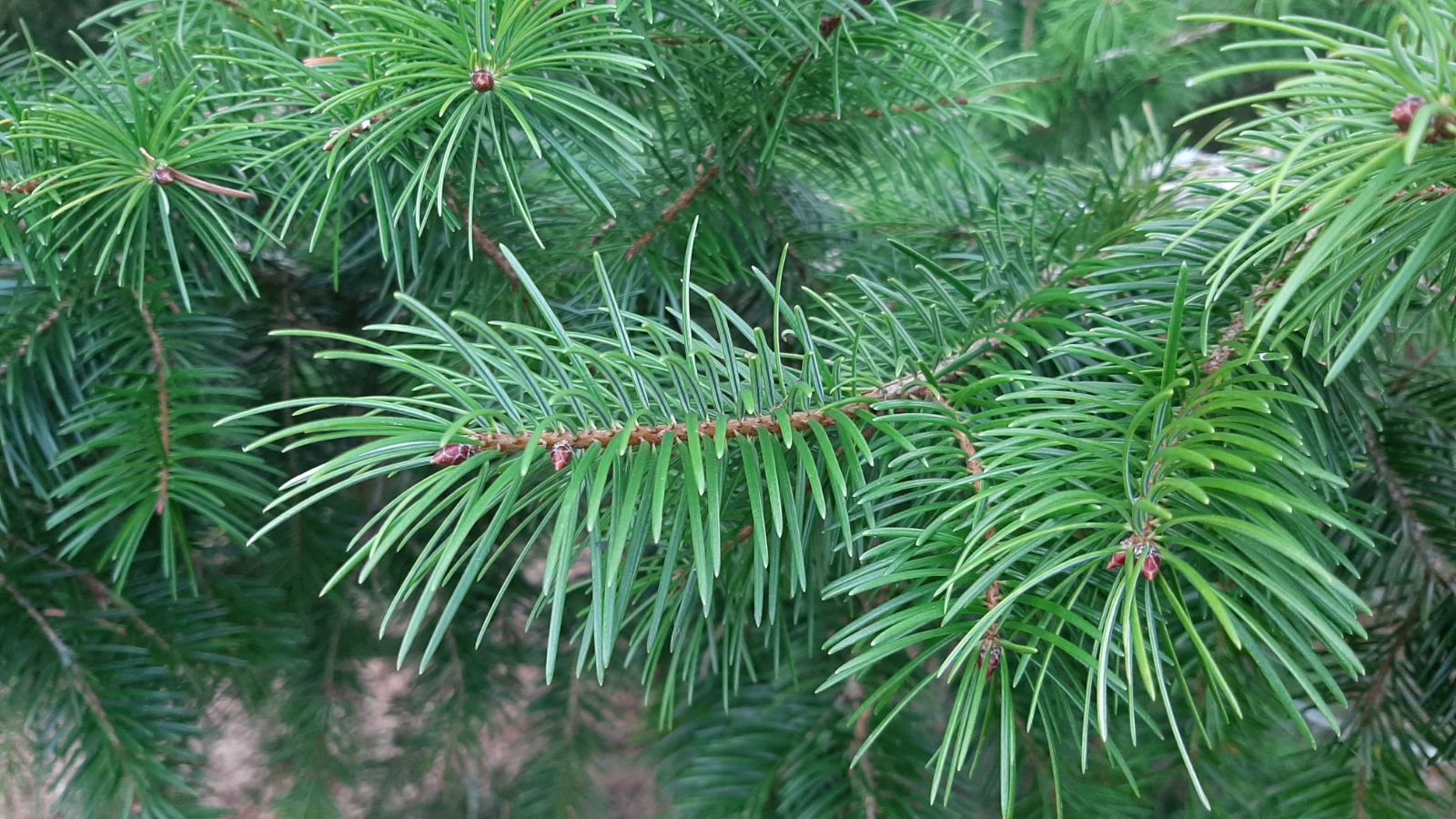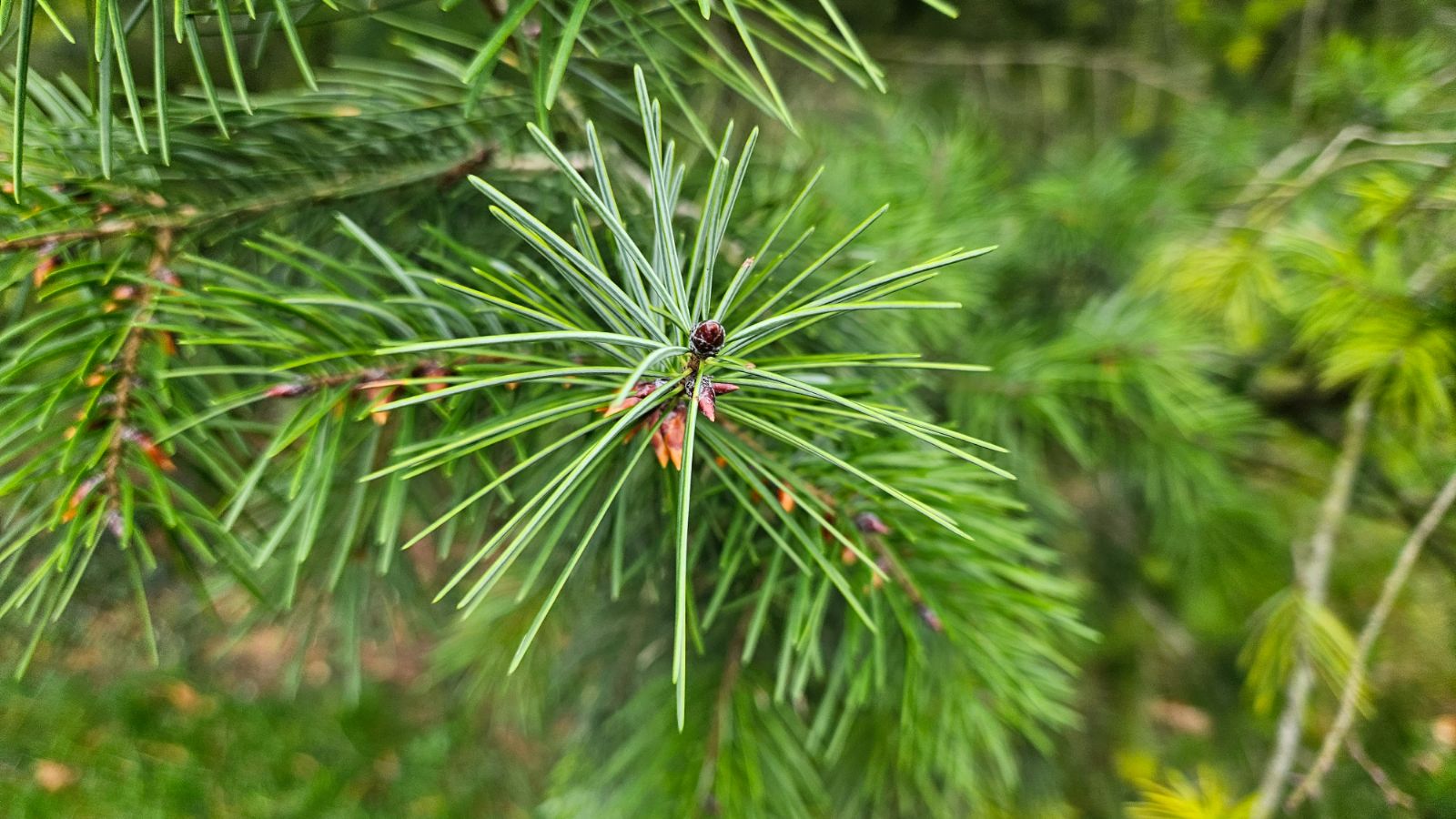Pseudotsuga macrocarpa
Sponsor
Kindly sponsored by
Dansk Dendrologisk Forening, The Danish Dendrology Society
Credits
Tom Christian & Aljos Farjon (2023)
Recommended citation
Christian, T. & Farjon, A. (2023), 'Pseudotsuga macrocarpa' from the website Trees and Shrubs Online (treesandshrubsonline.
Genus
Common Names
- Bigcone Douglas Fir
Synonyms
- Abies macrocarpa Vasey
- Tsuga macrocarpa (Vasey) Lemmon
- Pseudotsuga californica Flous
- Pseudotsuga menziesii subsp. macrocarpa (Vasey) A.E. Murray
Trees to 20–25(–44) m tall, dbh to 1–1.3 m; trunk monopodial, straight. Bark on trunk dark, blackish grey, scaly, longitudinally fissured, exposing reddish brown inner bark. Branches spreading horizontally, the lowest may be bent down; crown broad pyramidal, very open in old trees. Branchlets firm when short, slender, flexible and pendulous when longer, reddish brown or pale brown, in second year grey-brown, faintly ridged, minutely pubescent when young, soon glabrous; leaf scars small, circular. Vegetative buds ovoid-conical to fusiform-conical, acute, 7–8 × 4–5 mm, not resinous; bud scales triangular, with serrulate-erose margins, reddish brown, persisting 1–2 years. Leaves directed forward and sideways, several raised above shoot, on shaded shoots more pectinate, 2.5–3.5(–4) cm long, ca. 2 mm wide, more or less petiolate and strongly twisted at base, linear, straight, longitudinally grooved above, flattened; apex acute; stomata in two grey-white bands separated by a midrib below; leaf colour lustrous dark green or glaucous green above. Pollen cones 2 cm long, pale yellow, with red brown perular scales at base. Seed cones becoming pendulous on 1–2 cm long peduncles and deciduous, ovoid-cylindrical, more or less pointed at apex, 9–13(–18) cm long, 4–6 cm wide with opened scales, greenish yellow, with light green bracts, maturing to light brown, ripening to dull brown, with light brown bracts. Seed scales broadly cuneate-flabellate, thick, transversely convex, 2–2.5 × 3–3.5 cm at mid-cone, puberulent when young, soon glabrous, often resinous; upper margin rounded, entire; base cuneate-pedicellate. Bracts ligulate, with trilobate apex and a central cusp longer than lateral lobes, 3–3.5 cm long, exserted, not reflexed. Seeds ovoid-conical, 10–12 × 6 mm, brown; wings obovate, 10–14 × 6–8 mm, light brown. (Farjon 2017; Lipscomb 1993).
Distribution United States Southern California, near Los Angeles in the San Rafael, San Gabriel, San Bernardino, San Jacinto, and Santa Ana Mountains.
Habitat On the seaward slopes of coastal mountains at elevations between 275 m and 2450 m asl, on mountain soils of various origin, usually rocky and well drained, dry in summer. The climate is warm temperate, with cool, moist winters and warm, dry summers (annual precipitation 500 mm to 1500 mm), snow occurs only at the higher elevations. Above 800 m (transition zone) it is mainly mixed with Pinus jeffreyi, P. ponderosa, P. coulteri, and Abies concolor at the highest elevations. Common evergreen shrubs in these open pine forests are Ceanothus cordulatus and Arctostaphylos patula. At the lower elevations it occurs in the drier Canyon Live Oak forest type, with sclerophyllous oaks, e.g. Quercus kelloggii, Q. chrysolepis and Q. agrifolia.
RHS Hardiness Rating H5
Conservation status Near threatened (NT)
A relict species endemic to a small area of southern California, Pseudotsuga macrocarpa is aptly named, having comfortably the largest seed cones in the genus at 9–18 cm long, although usually smaller in cultivation in Europe. It is closely related to P. menziesii but distinct on account of its cones, stiffer more radially arranged needles, and for being a smaller tree, rarely exceeding 20 m tall except in the most sheltered sites where individuals to 44 m have been recorded (Lipscomb 1993); its range also lies wholly outside that of P. menziesii (Gibson 1913).
Except on a very local scale Pseudotsuga macrocarpa has never really been persecuted for its timber, which is ‘inferior in most ways to that of the Douglas Fir, lighter, weaker, and less elastic’ (Gibson 1913). Its IUCN assessment Near Threatened stems from the significant risk posed by fire, especially in the drier forest community under a Mediterranean climate with long, hot summers. Fire prevention measures and fire-fighting by forest management have mitigated this threat thus far, but in a warming climate this risk will likely increase, especially in light of the increasing human presence (Thomas 2019; Farjon 2017). Although many populations occur in protected areas such designations offer no protection against fire, but P. macrocarpa has exhibited some resilience against relatively intense fires thanks to its thick bark and ability to resprout (Steel, Safford & Viers 2015).
The American botanist C.C. Parry collected Pseudotsuga macrocarpa in 1850, but both he and Torrey initially mistook it for P. menziesii, hence Sargent later (1897) attributed the discovery to the Lieutenant Ives Exploring Expedition whose participant J.S. Newberry collected material in November 1857; once more material was available to testify to its distinctiveness, Torrey described Bigcone Douglas Fir in 1860, albeit as a variety of P. menziesii (Hermann 1982). Even by the end of the 19th century P. macrocarpa was not thought to be in cultivation on either side of the Atlantic (Sargent 1897) and while it seems reasonable to assume that it would have been attempted in a few of the early American collections, the earliest documented introduction to cultivation would appear to be that of Capt. H. Clinton-Baker who introduced seed to Britain in 1910, the same year he also introduced P. japonica (Bean 1976). This introduction may have been the source of trees at the Arboretum National des Barres, France, where by the early 1960s there were trees reaching ‘a vigorous and healthy 50 ft. [15.2 m], coning freely’ (Mulligan 1962).
In the same year a tree Clinton-Baker had planted at his home in Bayfordbury, Hertfordshire, UK, was c. 11.6 m × 22 cm dbh, and in 1964 the larger of two trees grafted in 1925 at Bedgebury, Kent, was 18.2 m × 53 cm dbh (Bean 1976). By 2015 the Bedgebury trees were 31.5 m × 95 cm dbh (the UK and Ireland champion) and 28 m × 78 cm dbh; others exceeding 20 m grow at the Sir Harold Hillier Gardens, Hampshire (21.4 m in 2013), Parc Cefn Onn, Glamorgan (23 m in 2013), Borde Hill, West Sussex (23 m in 2015) and Avondale Forest Park, Wicklow (23.5 and 24.5 m in 2000) (Tree Register 2023). Smaller trees grow in several collections across southern Britain but it remains rare, and not being so hardy as Pseudotsuga menziesii it requires some shelter when young (Rushforth 1987); it also benefits from meaningful summer heat, but young trees are thriving as far north as the Yorkshire Arboretum (pers. obs.). It is cultivated in a few specialist collections in the western USA, including the San Francisco Botanical Garden (pers. obs.). P. macrocarpa has been noted for its drought tolerance and it may prove a useful ornamental in various landscapes that must adapt to the warmer and drier conditions of the future.

